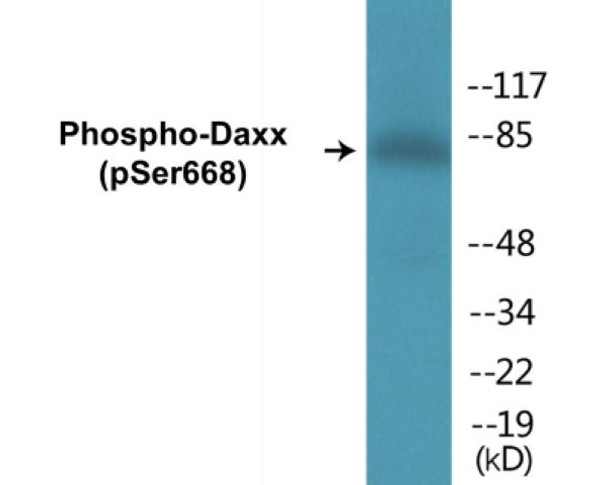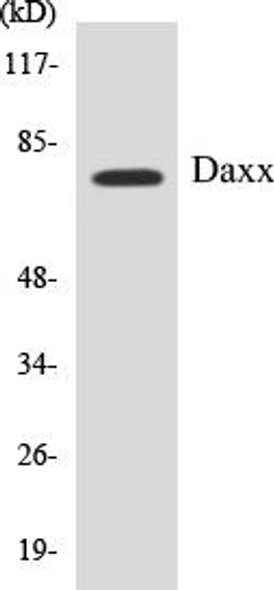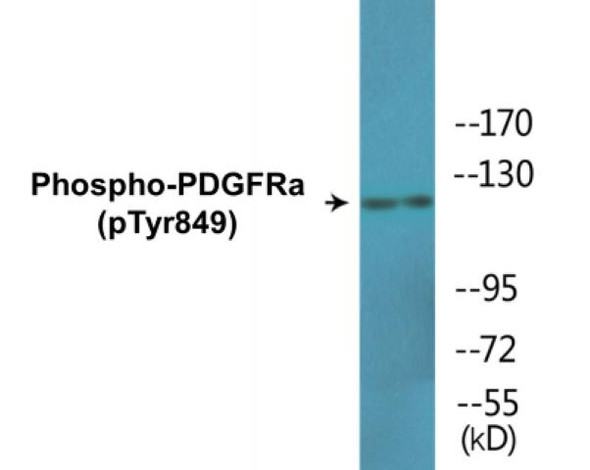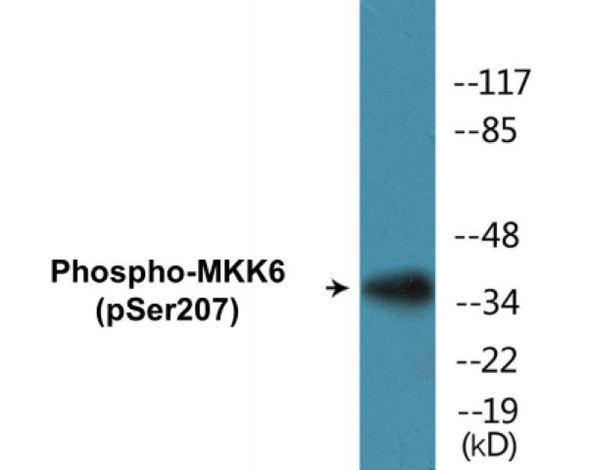Description
Daxx (Phospho-Ser668)Colorimetric Cell-Based ELISA Kit
The DAXX Phospho-Ser668 Colorimetric Cell-Based ELISA Kit is an innovative tool for detecting and quantifying phosphorylation of DAXX at serine 668 in cell lysates. This kit offers high specificity and sensitivity, providing accurate and reproducible results for research applications.DAXX is a key protein involved in various cellular processes, including apoptosis, DNA damage response, and transcriptional regulation. Phosphorylation of DAXX at serine 668 has been implicated in regulating its functions and interactions with other proteins.
By using the DAXX Phospho-Ser668 Colorimetric Cell-Based ELISA Kit, researchers can gain insights into the role of DAXX phosphorylation in different signaling pathways and diseases, such as cancer and neurodegenerative disorders. This kit is an essential tool for understanding the molecular mechanisms underlying these conditions and developing targeted therapies.
| Product Name: | Daxx (Phospho-Ser668)Colorimetric Cell-Based ELISA Kit |
| Product Code: | CBCAB00409 |
| ELISA Type: | Cell-Based |
| Target: | Daxx (Phospho-Ser668) |
| Reactivity: | Human |
| Dynamic Range: | > 5000 Cells |
| Detection Method: | Colorimetric 450 nm |
| Format: | 2 x 96-Well Microplates |
The Daxx (Phospho-Ser668) Colorimetric Cell-Based ELISA Kit is a convenient, lysate-free, high throughput and sensitive assay kit that can detect Daxx protein phosphorylation and expression profile in cells. The kit can be used for measuring the relative amounts of phosphorylated Daxx in cultured cells as well as screening for the effects that various treatments, inhibitors (ie. siRNA or chemicals), or activators have on Daxx phosphorylation.
Qualitative determination of Daxx (Phospho-Ser668) concentration is achieved by an indirect ELISA format. In essence, Daxx (Phospho-Ser668) is captured by Daxx (Phospho-Ser668)-specific primary antibodies while the HRP-conjugated secondary antibodies bind the Fc region of the primary antibody. Through this binding, the HRP enzyme conjugated to the secondary antibody can catalyze a colorimetric reaction upon substrate addition. Due to the qualitative nature of the Cell-Based ELISA, multiple normalization methods are needed:
| 1. | A monoclonal antibody specific for human GAPDH is included to serve as an internal positive control in normalizing the target absorbance values. |
| 2. | Following the colorimetric measurement of HRP activity via substrate addition, the Crystal Violet whole-cell staining method may be used to determine cell density. After staining, the results can be analysed by normalizing the absorbance values to cell amounts, by which the plating difference can be adjusted. |
| Database Information: | Gene ID: 1616, UniProt ID: Q9UER7, OMIM: 603186, Unigene: Hs.336916 |
| Gene Symbol: | DAXX |
| Sub Type: | Phospho |
| UniProt Protein Function: | DAXX: a transcriptional co-regulatory protein. Proposed to mediate activation of the JNK pathway and apoptosis via ASK1 in response to signaling from FAS and TGF-betaR2. Glucose deprivation activates the ASK1-SEK1-JNK1-HIPK1 pathway, relocalizing Daxx from the nucleus to the cytoplasm, where Daxx binds to ASK1, and subsequently leads to ASK1 oligomerization. Interaction with HSP27 may prevent interaction with TGF-betaR2 and ASK1 and block DAXX-mediated apoptosis. Seems to act as a transcriptional co- repressor and inhibits PAX3 and ETS1 through direct protein- protein interaction. Its transcription repressor activity is modulated by recruiting it to subnuclear compartments like the nucleolus or PML/POD/ND10 nuclear bodies through interactions with MCSR1 and PML, respectively. Two alternatively spliced isoforms have been described. |
| UniProt Protein Details: | Protein type:Nucleolus; Nuclear receptor co-regulator; Transcription, coactivator/corepressor; Apoptosis Chromosomal Location of Human Ortholog: 6p21.3 Cellular Component: chromosome, pericentric region; cytoplasm; cytosol; nucleoplasm; nucleus; PML body Molecular Function:androgen receptor binding; enzyme binding; heat shock protein binding; histone binding; p53 binding; protein binding; protein kinase activator activity; protein kinase binding; protein N-terminus binding; receptor signaling protein activity; transcription corepressor activity; ubiquitin protein ligase binding Biological Process: activation of JNK activity; androgen receptor signaling pathway; apoptosis; chromatin remodeling; induction of apoptosis via death domain receptors; negative regulation of transcription, DNA-dependent; nucleosome assembly; positive regulation of protein amino acid phosphorylation; positive regulation of protein kinase activity; regulation of protein ubiquitination; regulation of transcription, DNA-dependent |
| NCBI Summary: | This gene encodes a multifunctional protein that resides in multiple locations in the nucleus and in the cytoplasm. It interacts with a wide variety of proteins, such as apoptosis antigen Fas, centromere protein C, and transcription factor erythroblastosis virus E26 oncogene homolog 1. In the nucleus, the encoded protein functions as a potent transcription repressor that binds to sumoylated transcription factors. Its repression can be relieved by the sequestration of this protein into promyelocytic leukemia nuclear bodies or nucleoli. This protein also associates with centromeres in G2 phase. In the cytoplasm, the encoded protein may function to regulate apoptosis. The subcellular localization and function of this protein are modulated by post-translational modifications, including sumoylation, phosphorylation and polyubiquitination. Alternative splicing results in multiple transcript variants. [provided by RefSeq, Nov 2008] |
| UniProt Code: | Q9UER7 |
| NCBI GenInfo Identifier: | 24636785 |
| NCBI Gene ID: | 1616 |
| NCBI Accession: | Q9UER7.2 |
| UniProt Secondary Accession: | Q9UER7,O14747, O15141, O15208, Q5STK9, Q9BWI3, B4E1I3 F5ANJ6, F5ANJ7, F5H082, |
| UniProt Related Accession: | Q9UER7 |
| Molecular Weight: | 75,563 Da |
| NCBI Full Name: | Death domain-associated protein 6 |
| NCBI Synonym Full Names: | death domain associated protein |
| NCBI Official Symbol: | DAXX |
| NCBI Official Synonym Symbols: | DAP6; EAP1; BING2 |
| NCBI Protein Information: | death domain-associated protein 6 |
| UniProt Protein Name: | Death domain-associated protein 6 |
| UniProt Synonym Protein Names: | Daxx; hDaxx; ETS1-associated protein 1; EAP1; Fas death domain-associated protein |
| Protein Family: | Death domain-associated protein |
| UniProt Gene Name: | DAXX |
| UniProt Entry Name: | DAXX_HUMAN |
| Component | Quantity |
| 96-Well Cell Culture Clear-Bottom Microplate | 2 plates |
| 10X TBS | 24 mL |
| Quenching Buffer | 24 mL |
| Blocking Buffer | 50 mL |
| 15X Wash Buffer | 50 mL |
| Primary Antibody Diluent | 12 mL |
| 100x Anti-Phospho Target Antibody | 60 µL |
| 100x Anti-Target Antibody | 60 µL |
| Anti-GAPDH Antibody | 60 µL |
| HRP-Conjugated Anti-Rabbit IgG Antibody | 12 mL |
| HRP-Conjugated Anti-Mouse IgG Antibody | 12 mL |
| SDS Solution | 12 mL |
| Stop Solution | 24 mL |
| Ready-to-Use Substrate | 12 mL |
| Crystal Violet Solution | 12 mL |
| Adhesive Plate Seals | 2 seals |
The following materials and/or equipment are NOT provided in this kit but are necessary to successfully conduct the experiment:
- Microplate reader able to measure absorbance at 450 nm and/or 595 nm for Crystal Violet Cell Staining (Optional)
- Micropipettes with capability of measuring volumes ranging from 1 µL to 1 ml
- 37% formaldehyde (Sigma Cat# F-8775) or formaldehyde from other sources
- Squirt bottle, manifold dispenser, multichannel pipette reservoir or automated microplate washer
- Graph paper or computer software capable of generating or displaying logarithmic functions
- Absorbent papers or vacuum aspirator
- Test tubes or microfuge tubes capable of storing ≥1 ml
- Poly-L-Lysine (Sigma Cat# P4832 for suspension cells)
- Orbital shaker (optional)
- Deionized or sterile water
*Note: Protocols are specific to each batch/lot. For the correct instructions please follow the protocol included in your kit.
| Step | Procedure |
| 1. | Seed 200 µL of 20,000 adherent cells in culture medium in each well of a 96-well plate. The plates included in the kit are sterile and treated for cell culture. For suspension cells and loosely attached cells, coat the plates with 100 µL of 10 µg/ml Poly-L-Lysine (not included) to each well of a 96-well plate for 30 minutes at 37°C prior to adding cells. |
| 2. | Incubate the cells for overnight at 37°C, 5% CO2. |
| 3. | Treat the cells as desired. |
| 4. | Remove the cell culture medium and rinse with 200 µL of 1x TBS, twice. |
| 5. | Fix the cells by incubating with 100 µL of Fixing Solution for 20 minutes at room temperature. The 4% formaldehyde is used for adherent cells and 8% formaldehyde is used for suspension cells and loosely attached cells. |
| 6. | Remove the Fixing Solution and wash the plate 3 times with 200 µL 1x Wash Buffer for five minutes each time with gentle shaking on the orbital shaker. The plate can be stored at 4°C for a week. |
| 7. | Add 100 µL of Quenching Buffer and incubate for 20 minutes at room temperature. |
| 8. | Wash the plate 3 times with 1x Wash Buffer for 5 minutes each time. |
| 9. | Add 200 µL of Blocking Buffer and incubate for 1 hour at room temperature. |
| 10. | Wash 3 times with 200 µL of 1x Wash Buffer for 5 minutes each time. |
| 11. | Add 50 µL of 1x primary antibodies Anti-Daxx (Phospho-Ser668) Antibody, Anti-Daxx Antibody and/or Anti-GAPDH Antibody) to the corresponding wells, cover with Parafilm and incubate for 16 hours (overnight) at 4°C. If the target expression is known to be high, incubate for 2 hours at room temperature. |
| 12. | Wash 3 times with 200 µL of 1x Wash Buffer for 5 minutes each time. |
| 13. | Add 50 µL of 1x secondary antibodies (HRP-Conjugated AntiRabbit IgG Antibody or HRP-Conjugated Anti-Mouse IgG Antibody) to corresponding wells and incubate for 1.5 hours at room temperature. |
| 14. | Wash 3 times with 200 µL of 1x Wash Buffer for 5 minutes each time. |
| 15. | Add 50 µL of Ready-to-Use Substrate to each well and incubate for 30 minutes at room temperature in the dark. |
| 16. | Add 50 µL of Stop Solution to each well and read OD at 450 nm immediately using the microplate reader. |
(Additional Crystal Violet staining may be performed if desired – details of this may be found in the kit technical manual.)






